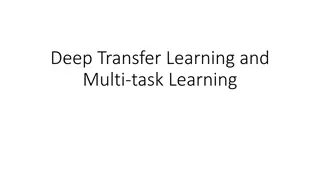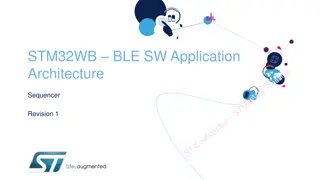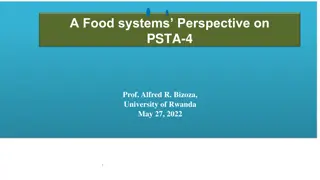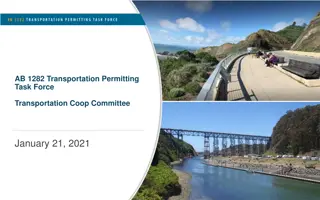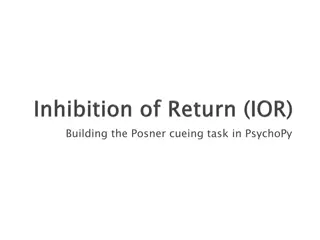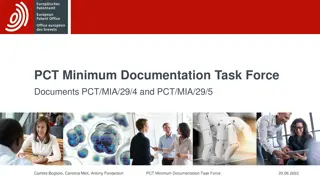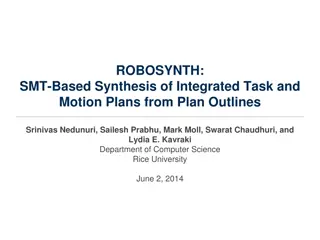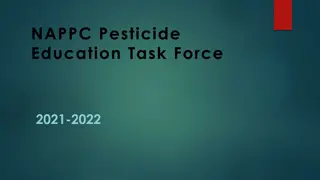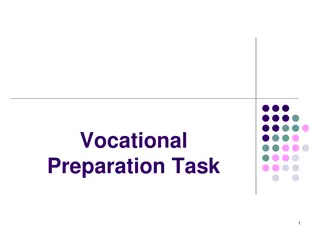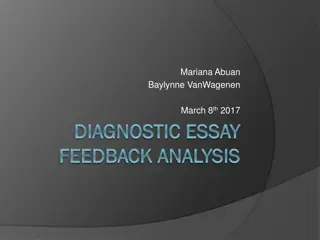PRE-START TASK ANALYSIS(PSTA)
Pre-Start Task Analysis (PSTA) is a systematic process crucial for assessing and mitigating potential hazards associated with tasks. By identifying risks, assessing their impact, implementing control measures, and communicating effectively, PSTA enhances workplace safety by proactively addressing dangers before task execution.
Download Presentation

Please find below an Image/Link to download the presentation.
The content on the website is provided AS IS for your information and personal use only. It may not be sold, licensed, or shared on other websites without obtaining consent from the author. Download presentation by click this link. If you encounter any issues during the download, it is possible that the publisher has removed the file from their server.
E N D
Presentation Transcript
PRE-START TASK ANALYSIS (PSTA) www.hsestudyguide.com
Pre-Start Task Analysis (PSTA) Pre-Start Task Analysis (PSTA) is a systematic process used to identify and assess potential hazards associated with a task before it is initiated. The primary goal of PSTA is to proactively analyze the steps involved in a task, identify potential risks or dangers, and implement measures to mitigate or eliminate those risks. This approach enhances overall safety by preventing accidents and ensuring that workers are well-informed about the potential hazards they may encounter. www.hsestudyguide.com
Steps in Pre-Start Task Analysis: Task Identification:Clearly define the task to be performed. This involves breaking down the task into its individual steps or components. Hazard Identification:Identify potential hazards associated with each step of the task. Hazards can include physical dangers, environmental factors, equipment issues, or human factors. Risk Assessment:Evaluate the level of risk associated with each identified hazard. This involves considering the likelihood of an incident occurring and the severity of its potential consequences. Control Measures:Develop and implement control measures to minimize or eliminate the identified hazards. This may involve modifying the task steps, using personal protective equipment (PPE), or implementing engineering controls. Communication:Ensure that all individuals involved in the task are aware of the identified hazards and the corresponding control measures. Effective communication is essential for the successful implementation of safety measures. www.hsestudyguide.com
Sample Example of PSTA: Task: Using a Circular Saw to Cut Wood Task Identification: Hazard Identification: Step 1: Set up the work area. Step 2: Ensure the circular saw is in proper working condition. Step 3: Measure and mark the wood for cutting. Step 4: Position the wood securely on the work surface. Step 5: Turn on the circular saw and make the cut. Step 1: Work area may have tripping hazards. Step 2: Circular saw blade could cause cuts or injuries. Step 3: Improper measurement may lead to inaccurate cuts. Step 4: Unsecured wood may lead to kickbacks or accidents. Step 5: Risk of injuries due to contact with the running saw blade. www.hsestudyguide.com
Risk Assessment: Control Measures: Step 1: Low risk, with proper housekeeping. Step 2: Moderate risk, especially if not handled carefully. Step 3: Low to moderate risk, depending on accuracy. Step 4: Moderate risk if wood is not secured. Step 5: High risk due to the potential for severe injuries. Step 1: Clear work area of hazards before starting. Step 2: Wear appropriate PPE, use safety guards, and follow safe handling procedures. Step 3: Double-check measurements and use guides for accuracy. Step 4: Use clamps to secure the wood to prevent movement. Step 5: Ensure proper training, use protective guards, and follow safety guidelines. Communication: All workers involved in the task should be briefed on the identified hazards and the corresponding control measures. Emphasize the importance of following safety procedures to prevent accidents. www.hsestudyguide.com
By systematically analyzing the task and implementing control measures, the Pre-Start Task Analysis helps create a safer working environment and reduces the likelihood of accidents and injuries. www.hsestudyguide.com










